lets hear what the meteor has to say
Meteoroids and Meteors
Small Solar Arrangement Bodies (SSSBs) are non-planet objects that orbit around our Sunday. SSBs include asteroids, comets andmeteoroids. A meteoroid is an object smaller than 1 metre in diameter. Very small meteoroids aremicrometeoroids.They can be as pocket-size as a grain of sand. We call anything smaller than thirty micrometresinterplanetary dust.
In the void of space, meteoroids travel at neat speeds. They tin enter Earth's atmosphere at speeds from 39 600 km/h up to 259 200 km/h. Equally a meteoroid travels through the temper, it meets resistance from the air. This resistance is from a force calledfriction. Just an even more than important force comes from thepinchof the air in forepart of the moving meteoroid. The compression of air increases the pressure of the air. The high force per unit area increases the temperature of the air. This burns material on the meteor's surface, creating a visible light.
From Earth, this fast-traveling, burning stone volition appear as a streak of light. Ameteoris the visual miracle nosotros observe. Meteors can be meteoroids or asteroids. Meteors are ordinarily visible as they enter the thermosphere. They but last a few seconds earlier they fire upwardly. But fast or large meteors can be visible from higher altitudes and last up to a couple of minutes. Before people understood objects in space, they called those meteorsfalling stars orshooting stars. But meteors have nothing to practise with stars, other than the fact that they both emit calorie-free.
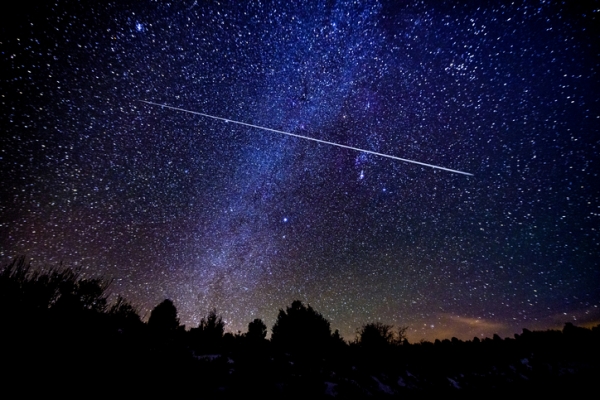
Fireballs is a term astronomers use to describe very bright meteors. Past definition, fireballs must exist brighter than the planet Venus. Sometimes, a fireball tin explode. Then it is abolide. In 2013, a bolide exploded near the boondocks of Chelyabinsk in Russia. This bolide was actually an asteroid. Meteoroids rarely get that close to World before exploding.
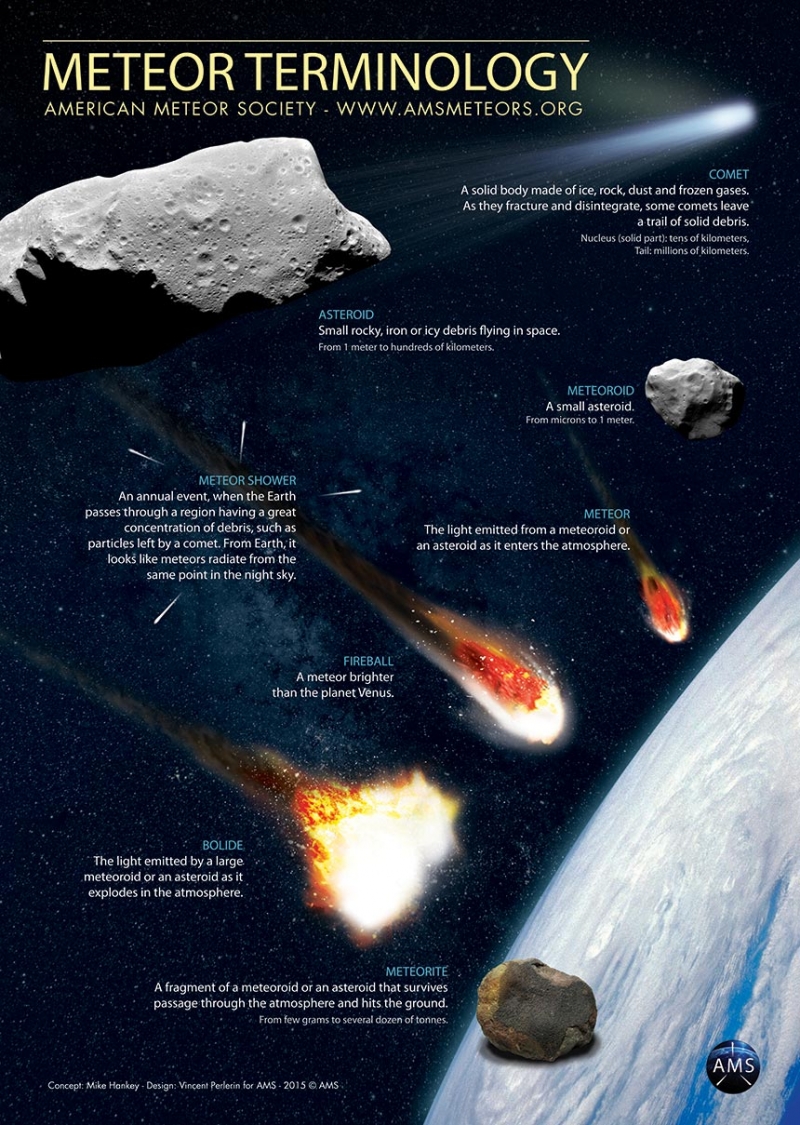
We can also tell fireballs by the visible trail of debris they leave in their path. There tin can be two types of trails. These areionizing trails, also known astrains, andfume trails.
While a meteor is moving through the atmosphere, information technology charges the air molecules around information technology. Those ionized molecules glow and create a bright trail behind the meteor. At the altitude at which this occurs, air moves much less than information technology does closer to the surface. If a trail remains visible in the heaven for many minutes, it is chosen apersistent train.
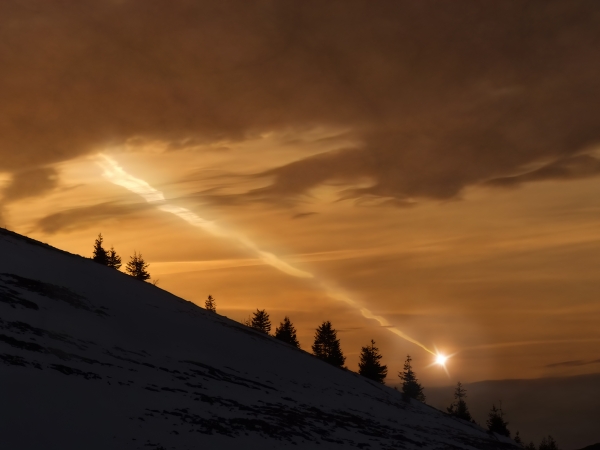
Fume trails are non-luminous trails of smoke. They can sometimes look like the contrails that planes leave in the sky.
Meteor Showers
You probably know that comets go out a trail of droppings behind them equally they motion through space.Meteor showers happen when Earth crosses the orbit of comets or large asteroids. This is why shooting star showers happen every year around the same fourth dimension.
During a shooting star evidence, the meteors all seem to enter World's atmosphere from the aforementioned indicate. This is because the meteoroids from a comet all travel on the same path. We call the surface area where they seem to originate aquadrant. The quadrant is named for the nearestconstellation. The showers take names from these constellations. For case, the virtually popular ane to view is thePerseid meteor shower. This is probably because it happens during warm Baronial nights. Perseid meteors all seem to originate well-nigh the constellationPerseus.
Did you know?
The most intense meteor shower recorded was the 1833 Leonid shower, when observers saw 20 to 30 meteors per 2d. That'south around 75 -100 000 per hour! Many people idea that the end of the earth was coming.
Below is a tabular array of 4 of the major shooting star showers. But meteors fall on Earth every day. And although meteors also autumn during the day, it is much easier to come across them at night. And then whenever y'all're exterior at nighttime, expect up and you might see a meteor!
| Time | Peak | Approximate meteors per hour | Origin | Quadrant (constellation) | |
|---|---|---|---|---|---|
| Eta Aquarids | Apr 19 - May 28 | May 5-6 | 50 | 1P/Halley | Aquarius (nigh ane of its brightest stars, Eta Aquarii) |
| Perseids | July 14th - August 24th | August 12-xiii | 110 | Comet 109P/Swift-Tuttle | Perseus |
| Geminids | December quaternary-17th | December 13-14 | 120 | Asteroid Phaethon (mayhap a dead comet) | Gemini |
| Quadrantids | January 3-4 | 110 | (196256) 2003 EH1 | Bootes (originally called Quadrans Muralis) |
Data source
Did you know?
Earth goes through the Halley comet's path twice a year. TheEta aquarids happen in the jump while nosotros take theOrionids in the fall.
Meteorites
If a meteor makes it through the atmosphere and lands on the surface, so it becomes ameteorite. Most of the meteorites found on land are the size of pebbles. The biggest meteorite ever discovered is the Hoba meteorite. A farmer plowing his field in Namibia institute information technology in 1920. It is about three metres wide and one metre thick. It weighs around fifty tons. It is 82% atomic number 26 and xvi% nickel, making it the largest natural ferronickel meteorite found on Earth.
In that location are iii main types of meteorites. These arestony,metallicandstony-metal meteorites. There are many subcategories that depend on what the meteorite is made of.
About meteorites found arestony meteorites. They are mainly fabricated ofsilicates. Silicates are silicon-based compounds. Silicon is the 2nd nigh common element on Earth. Stony meteorites are made of similar materials to Globe rocks, but they await different. For instance, amongst stony meteorites, the nearly common category ischondrites.Chondrites are meteors withchondrules. Chondrules are visible spherical pieces of minerals. Scientists think that chondrites are as old equally the Solar System. Chondrites formed around 4,5 billion years ago and haven't changed much since.
Achondritesdo not take chondrules. They show signs of things that happened later the birth of the Solar Organization. Like igneous rocks on Earth, most achondrites accept molten materials that solidify. Scientists think that most achondrites are pieces of asteroids, moons and planets.
We can rarely identify the exact origin of a meteorite. For example, nosotros have institute approximately 50 000 meteorites on Earth. Nosotros know that sixty came from Mars and 371 from the Moon. We can only ostend these ones because we collected samples from these two places!
Only about 5% of all meteorites constitute aremetallic meteorites. Metallic meteorites are sometimes namedfe oriron-nickel meteorites. This is considering most metallic meteorites are fabricated of iron or nickel. Scientists think well-nigh of these meteorites come from the cadre of asteroids. They are quite interesting to look at. Their lumpy shapes show how they were in one case molten metal.
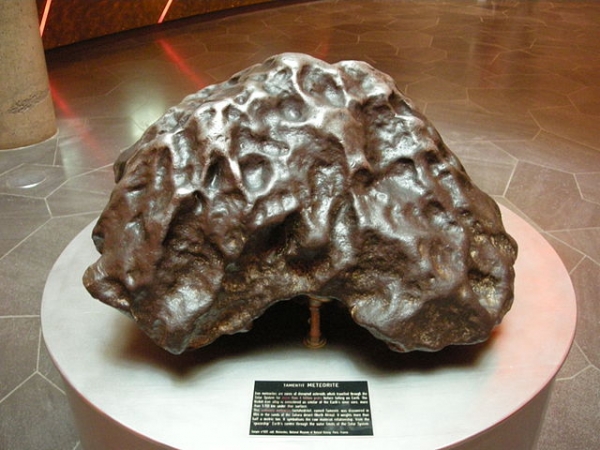
Finding meteorites takes training and patience. Information technology is a little easier to find iron meteorites. They are dark in color, which helps them to stand out against paler ground. This is why meteorite "hunting" is easier to do in wide, flat areas with light ground, such as deserts.
Studying meteorites can help us understand the origins of the Solar Arrangement and its planets. For a long time, they were the simply information we had. Merely we can now combine what we have learned from meteorites with new information nerveless by infinite missions.
Impactitesare earth materials transformed by meteor impacts. It is like shooting fish in a barrel to mistake them for meteorites. Impactites can take many different forms. They tin look similar pieces of glass when an impact happens on a sandy terrain.Tektites are one type of impactite. They expect like terrestrial obsidian just have characteristic shapes.
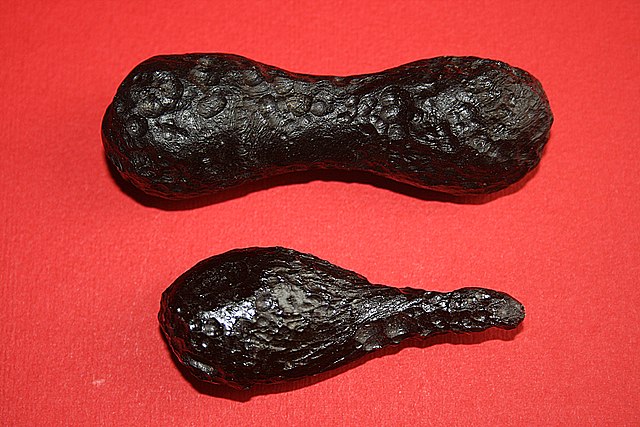
Frequency and Risk to Humans
So, how many meteors and meteorites get to Earth every mean solar day? Scientists approximate that betwixt 50 to 100 tons of meteoroids and interplanetary dust enter Earth'southward atmosphere every day! Meteoroids entering the atmosphere represent little risk to humans because of their size. Just asteroids are a different story. Y'all tin read our articles on this topic in the Learn More box beneath!
Did you know?
Every twelvemonth, the World is hit by about 6 100 meteors large enough to reach the ground, or about 17 every twenty-four hour period, research has revealed.
Source: https://letstalkscience.ca/educational-resources/backgrounders/meteoroids-meteors-and-meteorites
0 Response to "lets hear what the meteor has to say"
Post a Comment